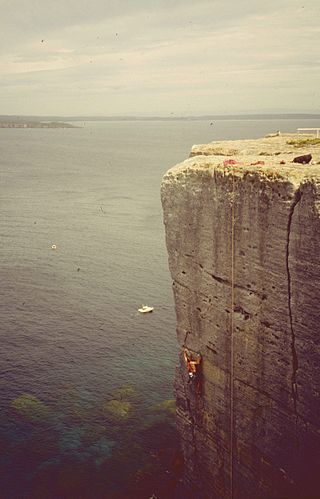
Beecroft Peninsula is the northern headland of Jervis Bay, on Australia's east coast. On the western and southern sides of the peninsula steep sandstone cliffs rise out of the ocean, up to 91 metres at its southernmost point, Point Perpendicular. White sandy beaches are found along the northern, eastern and southern sides interspersed with numerous intertidal reefs.

The Kangaroo Island dunnart is a dark sooty-grey coloured dunnart species first described in 1969, with paler underparts of its body. It has an average body length of 170–198 mm, a snout to anus length of 80–93 mm, a tail measurement of 90–105 mm, a hind foot of 17.5 mm, ear length of 18 mm and a weight of 20–25 grams. The thin tail is also gray, but lighter on the bottom. The tail is longer than the body. Kangaroo Island dunnarts are dimorphic, with males larger than females.
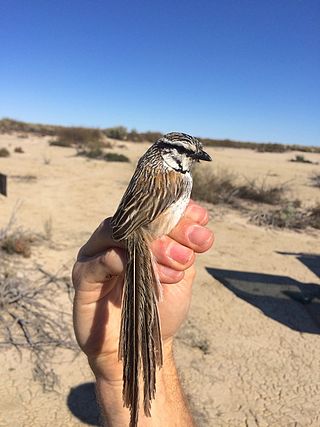
The grey grasswren is a passerine bird in the Australasian wren family, Maluridae. It is found on arid inland floodplains of Australia where it is endemic. The grey grasswren is a rarely seen elusive bird that was first sighted in 1921 but not taxonomically described until 1968. Its greyish coloration and very long tail distinguish it from all other grasswrens. While some recent research has been conducted, there still remain many gaps in the knowledge about the ecology of this cryptic bird.

The Lord Howe gerygone or Lord Howe gerygone flyeater was a small bird in the family Acanthizidae, brown and greyish in color. Its head was brown apart from a pale grey eye-ring and a grey throat and chin, many parts of the animal varied to the colour of yellow, this being apparent in its bright yellow belly. It made its home in the canopies of the island's forest until the early 20th century. The bird has had a variety of monikers: locally, it was known as the "rain-bird" due to its activity after the rains, or the "pop-goes-the-weasel", due to the similarity of its song to the well-known tune. The bird was endemic to Lord Howe Island in the Tasman Sea. There have been no records of the species since 1928, and it is considered to be extinct. Its extinction is almost certainly due to predation by black rats which were accidentally introduced to the island in 1918 following the shipwreck of the SS Makambo there.

Wedge Island is a 400-metre long wedge shaped island north of Lancelin and south of Cervantes on the Western Australian coast. The island is located just south of “the point” and approximately 15km south-east of an informal settlement known as Grey village with which it often shares a name. Both are within the Shire of Dandaragan.
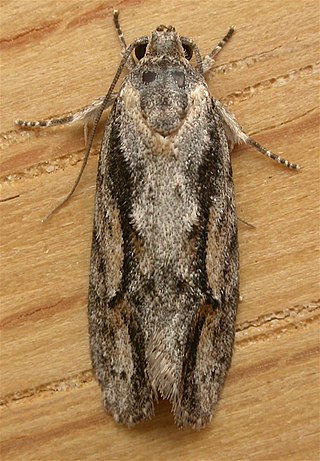
Agriophara leptosemela is a moth of the family Depressariidae. It is found in Australia, where it has been recorded from South Australia, the Australian Capital Territory, New South Wales and Queensland.

Pedois humerana is a species of moth of the family Depressariidae. It is found in Australia, where it has been recorded from New South Wales and Tasmania.

Heteromicta pachytera is a species of moth of the family Pyralidae. It is found in Australia, including Queensland, New South Wales, Victoria, South Australia and Tasmania.

Australian Convict Sites is a World Heritage property consisting of 11 remnant penal sites originally built within the British Empire during the 18th and 19th centuries on fertile Australian coastal strips at Sydney, Tasmania, Norfolk Island, and Fremantle; now representing "...the best surviving examples of large-scale convict transportation and the colonial expansion of European powers through the presence and labour of convicts".
The Department of Parks and Wildlife (DPaW) was the department of the Government of Western Australia responsible for managing lands described in the Conservation and Land Management Act 1984 and implementing the state's conservation and environment legislation and regulations. The minister responsible for the department was the Minister for the Environment.
Pedois amaurophanes is a moth in the family Depressariidae. It was described by Alfred Jefferis Turner in 1947. It is found in Australia, where it has been recorded from New South Wales.
Pedois rhaphidias is a moth in the family Depressariidae. It was described by Alfred Jefferis Turner in 1917. It is found in Australia, where it has been recorded from Queensland.
Pedois rhodomita is a moth in the family Depressariidae. It was described by Alfred Jefferis Turner in 1900. It is found in Australia, where it has been recorded from Queensland.
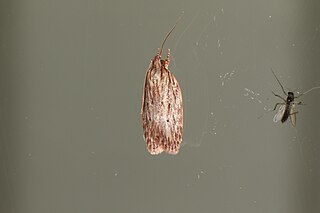
Pedois ceramora is a moth in the family Depressariidae. It was described by Edward Meyrick in 1902. It is found in Australia, where it has been recorded from Victoria.
The Lord Howe Marine Park is an Australian marine park located about 550 km (340 mi) offshore of New South Wales, near Lord Howe Island. The marine park covers an area of 110,126 km2 (42,520 sq mi), encompassing the smaller Lord Howe Island Marine Park, and is assigned IUCN category IV. It is one of 8 parks managed under the Temperate East Marine Parks Network.
The Cod Grounds Marine Park is an Australian marine park located approximately 5.5 km offshore of New South Wales, near Laurieton. The marine park covers an area of 4 km2 (1.5 sq mi) and is assigned IUCN category II. It is one of 8 parks managed under the Temperate East Marine Parks Network.

Wallumatta Nature Reserve, also called the Macquarie Hospital Bushland, is a 6-hectare (15-acre) nature reserve bushland area, surrounded by the residential suburb of East Ryde, in suburban Sydney, Australia. Once part of the Field of Mars of 1804, the reserve is the largest surviving area of Sydney Turpentine-Ironbark Forest, an endangered ecosystem. Soils are based on Ashfield Shale and Hawkesbury Sandstone.
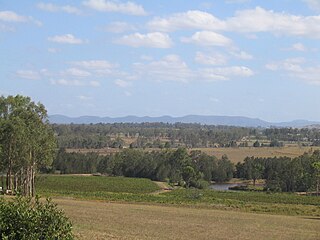
The Central Hunter Valley eucalypt forest and woodland is a grassy woodland community situated in the Hunter Valley, New South Wales, Australia. It was listed in May 2015 as critically endangered under Australia's national environment law. The Warkworth Sands Woodland of the Hunter Valley, situated in the area, was gazetted as an endangered ecological community in New South Wales on 13 December 2002 under the NSW Threatened Species Conservation Act 1995 and now under the Biodiversity Act of 2016.
Cratystylis conocephala, the blue bush daisy, blue bush, grey bush, and round leaved greybush, is a species of flowering plant in the family Asteraceae, native to southeast Western Australia, South Australia, New South Wales, and Victoria. It is a densely branched, spreading shrub. The species is listed as endangered in New South Wales and critically endangered in Victoria.












